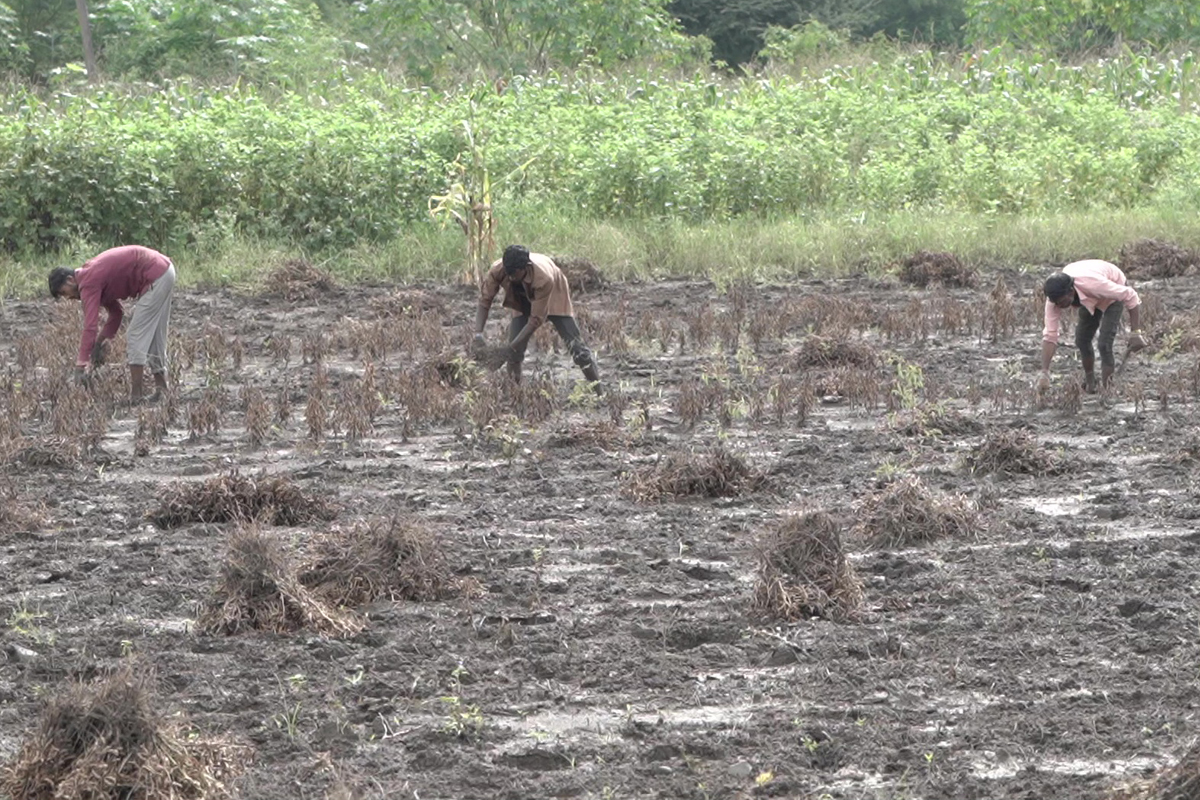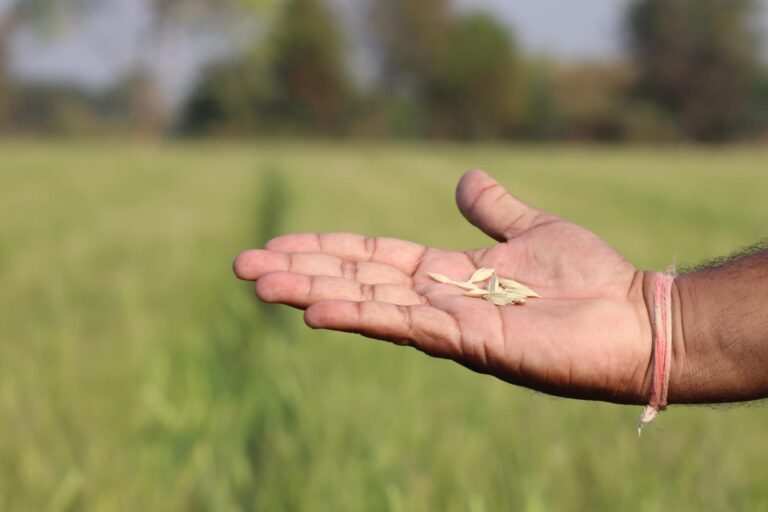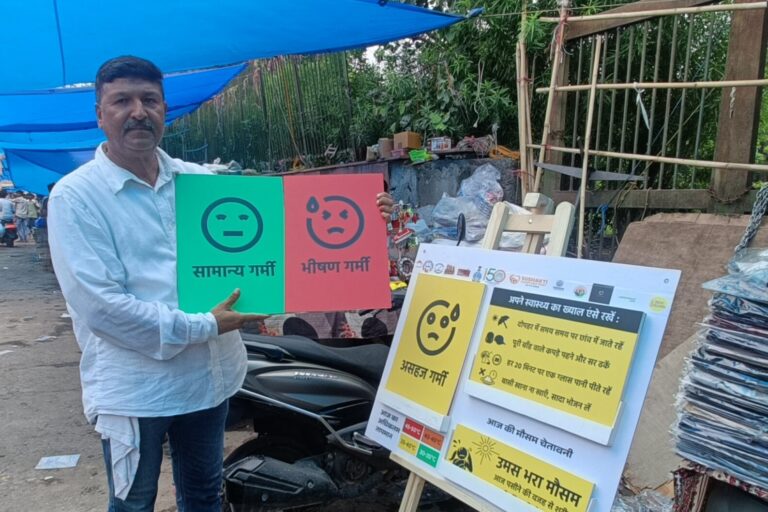- Every year, during the sugarcane harvest season, thousands of workers from Maharashtra’s drought prone region, migrate within the state to work as sugarcane cutters. They work for low wages and in poor working conditions.
- The workers, who own small parcels of land in their own villages, say that if they had better water management facilities in their villages, they would not migrate to other parts to work as sugarcane cutters.
- Even as water problems continue in drought prone districts such as Beed, sugar factories here are applying for ethanol production licenses.
- Growing sugarcane and making ethanol out of the crop are both water-intensive processes.
It’s 8 p.m. on a rainy day in mid-October and a family of 10 from Beed has arrived in the Nandhyal village of Kolhapur, a sugarcane growing district in south-western Maharashtra. Beed is a district in the eastern part of the state and lies in the region of Marathwada. The family has come to Kolhapur to work as sugarcane cutters for the harvest season. On this open patch of land, they have set up bright blue tents made up of tarp, complete with bags of clothes, food ration, and utensils. This will be their home for the next four months.
Kolhapur is one of the richest sugarcane-producing districts in Maharashtra, which itself is among the top sugarcane producing states in India. Kolhapur lies in the south-western part of the state, along the Sahyadri mountain range. It receives abundant rainfall from June to September and also has good irrigation infrastructure. Farmers get together to form cooperatives to create and maintain facilities for lifting water from rivers and canals to irrigate their fields. The sugarcane harvesting season usually occurs during the post monsoon months, from October/November to February/March.

East of Sahyadri, extending towards the plateau region, rainfall diminishes to less than 200 mm. Large parts of this region fall in the rainshadow area and are prone to long spells of drought. Marathwada, which lies in the south-eastern part of the state, is one such region. It covers eight districts – Aurangabad, Beed, Jalna, Latur, Nanded, Osmanabad, Parbhani and Hingoli. The 2011 census shows a population of approximately 18 lakh (1.8 million) across the eight districts. Cyclical drought is a common occurrence in this region. In 2019, more than 151 talukas of the region were declared drought-ridden.
The problem of drought and low agricultural productivity in the region has made seasonal migration, from the dry areas to the water-rich areas, common. “Non-development of agriculture is a big reason why people from here migrate to work in the cities, and as sugarcane cutters,” said Bharat Patankar, a Sangli-based activist and founder of the Shramik Mukti Dal (Toilers’ Liberation League). He added that people from this region are part of the organised and unorganised workforce in cities.
Poor irrigation facilities
In a drought-prone, agrarian-based economy, there should be strong policies working towards building a robust water management system. However, Pradeep Purandare, retired professor at Water and Land Management Institute (WALMI) in Aurangabad, said that is far from the case in Maharashtra. “There are nine different irrigation acts in Maharashtra and not one of them has been implemented properly,” he told Mongabay-India. “The Maharashtra Irrigation Act of 1976 is the parent act. And you have to issue certain notifications regarding command areas, rivers and appointment of canal officers. If you complete this procedure, then the actual governance starts. Most of these notifications have not been issued. The Act was enacted in 1976 and 46 years have passed, but there are no rules for this act. Without the rules, nothing can be implemented,” he added.
While Marathwada has 35 dams, Purandare said that the catchment area of most of these dams is in other areas. “The Jayakwadi water is received from Nasik and when this happens, there is always a tussle between upstream and downstream,” the retired professor said.
Over the years, a number of schemes have been introduced, but none of them have worked well enough towards improving water access for the farmers.

A paper by Watershed Organisation Trust in Pune analysed a farm pond scheme and found that farmers ended up exploiting groundwater further, to fill into their own individual ponds. “The long-term strategy should be to limit the number of farm ponds, regulating their size, and most importantly ensuring that groundwater is not extracted to be stored in farm ponds,” the paper noted.
Another scheme, the JalYukt Shivar Abhiyaan, launched in 2015 by the Maharashtra government, in a bid to make the state “drought-free by 2019”. The Bharatiya Janata Party-led scheme spent Rs. 9,633 crore (Rs. 96.33 billion) over cement chain canal construction programmes, deepening of canals and nullahs, creating water storage capacity, encouraging tree plantations among other things. An audit report by the Comptroller and Auditor General of India criticised the lack of proper implementation of the scheme stating there was “inadequate monitoring by the state water conversation department of the project.” It also questioned the utilisation of funds. The year 2019 witnessed drought in at least 5,000 villages, and about 1,300 farmer suicides. A critique in Economic and Political Weekly called the scheme a “quick-fix” solution to a long-term problem.
An email sent to the irrigation department for a comment on the irrigation situation in Maharashtra did not receive a response at the time of publishing.
Sugarcane sucking out water in a drought-prone region
Purandare of WALMI also blames sugarcane as a reason for groundwater depletion. In 2018-19, 27% of the irrigated land of drought-prone Marathwada was used for sugarcane cultivation. Sugarcane requires a high amount of water to grow. “You must have heard of the concept of virtual transport of water. When you prepare sugar in Marathwada and export it to other parts of India and the world, you are actually exporting water from Marathwada, a drought-prone region,” he told Mongabay-India.
Meanwhile, sugar factories located in Marathwada are applying for ethanol production licenses, a trend that is concerning to farmers who worry about the water that will be further sucked up by the factories. To produce one litre of ethanol, 2,860 litres of water is needed.

Kuldip Karpe, a Beed-based farmer and member of Swabhimani Shetkari Sangathana, a farmers’ union fears that the impetus to ethanol production will be the end of water for Marathwada. “We have 10 sugar factories here in Beed, and all are applying for ethanol licenses,” he said. “If you look at just the drinking water ratio of Beed, in the pre-monsoon months after February, 600 villages get their water from tankers. The sugar factories here will put ethanol production facilities and will consume three times more water than the tanker water capacity of 600 villages. We should not have this ethanol project in Marathwada.”
Ethanol production is receiving a big push from the government in India as it targets an increase in ethanol-blended petrol, a cleaner fuel alternative. The government is incentivising ethanol derived from sugarcane. Maharashtra, being a major sugarcane-producing state, will have a significant role in this meeting this target.
Read more: India goes big on sugarcane-based ethanol; water requirements a concern
Farmers prefer working in their own fields over migrating
The agrarian population in Maharashtra is largely of three kinds — the landless, small/marginal land- owning farmers, and large landowners. Farmers in Marathwada are also of two types — seasonal farmers, who depend on rainfall for their crops, and farmers who depend on irrigation for their crops. The landless and small, seasonal land-owning farmers migrate to other parts to work as sugarcane cutters during the harvest season.
Padrang Shelke and Baban Shelke live in Belgaon, a village in the Beed district of Marathwada. They own small parcels of land, on which they cultivate soybeans and cotton. This year, owing to erratic and unseasonal rainfall, their crop did not reap any benefits. “Everything is destroyed,” Padrang told Mongabay-India “We have so much debt. We are waiting for the rains to end so we can go for cane-cutting and earn some income.”
Belgaon has a population of 300, but during the sugarcane season, the village is almost empty. “If you come after two months, you will see an empty village,” Padrang said. “We all leave for sugarcane cutting. Only the elderly stay back.”
A sugarcane cutter’s task is to cut, collect and bundle the cane during the harvest season. A typical day involves approximately 15 hours of work that starts at 4 a.m., and goes on till 7 p.m., with an hour’s lunch break in between. “The colder the weather, the better the cut,” said Baban. Using a machete-style knife (koyta), the cutter hacks the stem of the cane, the leaves of the stem and puts it in a pile. They use the leaves to tie 15-20 sticks of cane together and each bundle (moli) weighs about 25-30 kilograms. They then carry this on their head and load it on a tractor or truck. Each worker is expected to cut one tonne of sugarcane a day and is employed by a contractor who pays their salaries.
“They (the contractors) give us an advance of Rs. 1-2 lakh (Rs. 100,000-200,000) for the season. And then we work to pay this off,” Baban said. The farmers receive Rs. 273 to Rs. 320 per tonne of sugarcane. This means that in a day, a worker earns up to Rs. 320 for 15 hours of labour. If they are unable to pay back the debt in one season, the amount with interest is carried forward to the next season, and the people get caught in a debt trap.
In addition, the workers are also expected to pay for their own medical expenses, cattle and other expenses. “If something happens to us, we are on our own,” said Baban.
There is no safety equipment, hospital or medical facilities in the vicinity, the workers from Beed told Mongabay-India. For them, cuts over their bodies, snake and insect bites are common.

There have been instances of accidental deaths, too. In March 2021, a 47-year-old man from Kagal village died after he fell off a 15-feet high ladder, while loading 30 kilograms of cane stick on the tractor. Arjun, his 24-year-old-son, said that his father was fit and had no ailments. More than a year later, the family is yet to receive their insurance of Rs. three lakhs (Rs. 300,000). “We have been told it will come next month,” he said.
For women, the situation is worse. They avoid going for cane-cutting, as the work is back-breaking, they do not have any toilet facilities and it is often not safe. However, sometimes, women are compelled to migrate for this work, because their farms back in Beed are suffering with no proper water availability.
In her village, Belgaon, Meenakshi Shelke, a farmer, has a full day – household chores, cooking, working in the fields till 7 p.m. and then back home to resume chores till 11 p.m. But she prefers that over migrating for sugarcane cutting. The work is painful, inconvenient and unsafe, she says. “And it is not home.” She added that if there was better water availability for their farms in Belgaon, she and others from the village would not have to go for sugarcane cutting work.
Hundreds of sugarcane-cutters from Marathwada marched to the sugar commissioner’s office in Pune, on September 19, as part of a protest organised by the Maharashtra arm of the Centre of Trade Unions (CITU). They were demanding better wages, working conditions, a formal identification and work benefits.
Maharashtra’s Regional Deputy Commissioner of Social Welfare Office Pune, Balasaheb Solanki, told Mongabay-India that they have set up the Lokneta Gopinath Munde Ustod Kamgar Kalyan Mahamandal, a sugarcane farmer welfare corporation, which will collect a corpus fund to create better facilities for the 10 lakh (one million) workers in the state. Rs. 10 per tonne of sugarcane from all sugar mills will be diverted towards this fund.
Banner image: Sugarcane cutters at work in Kolhapur district, Maharashtra. Photo by Jaysing Chavan/Mongabay













